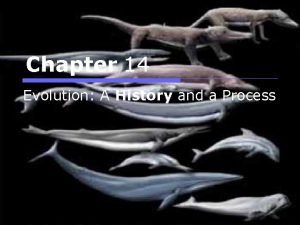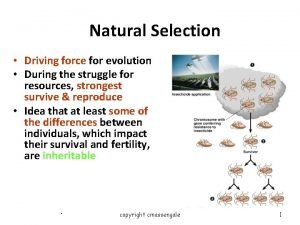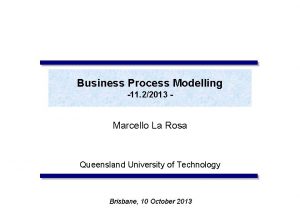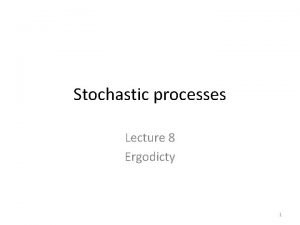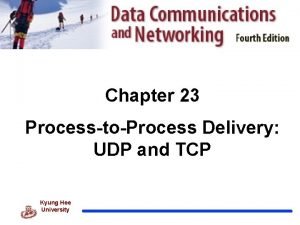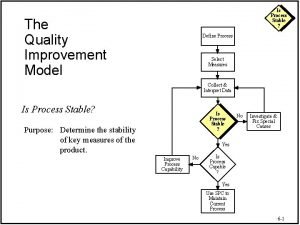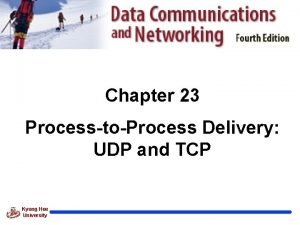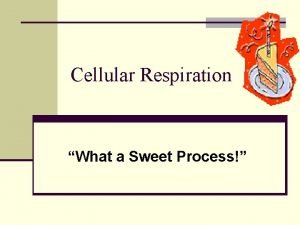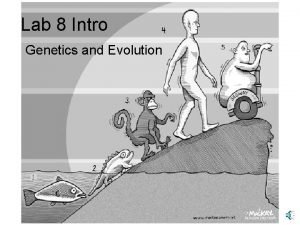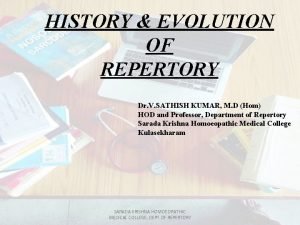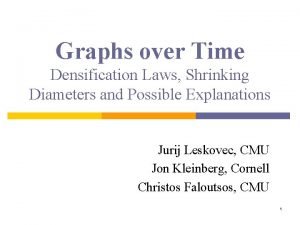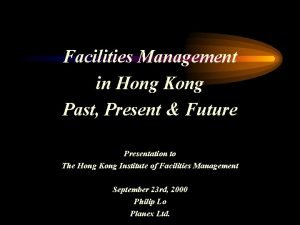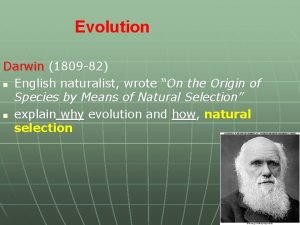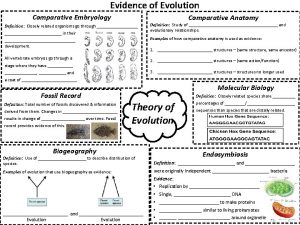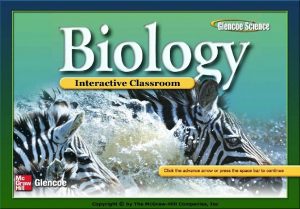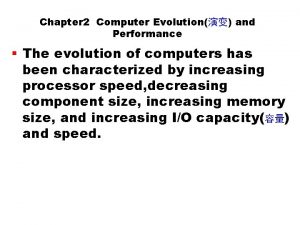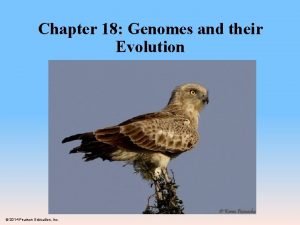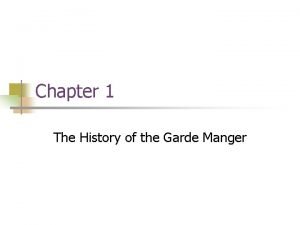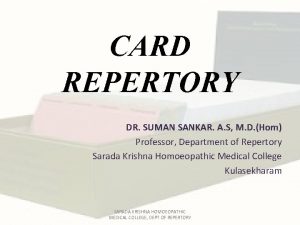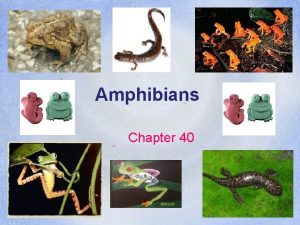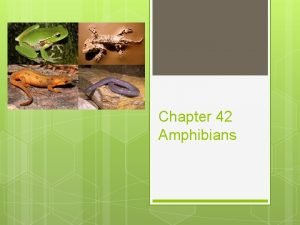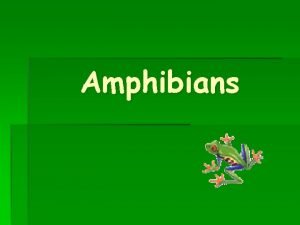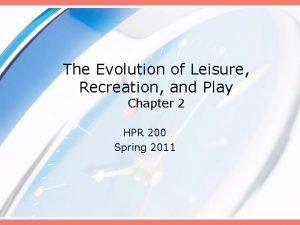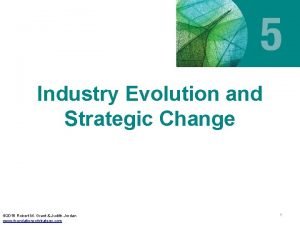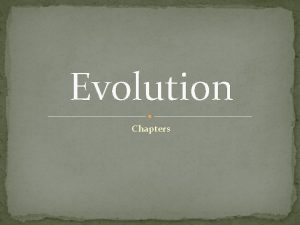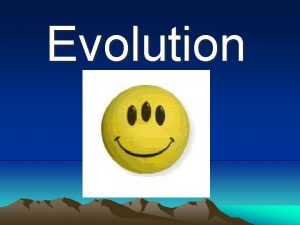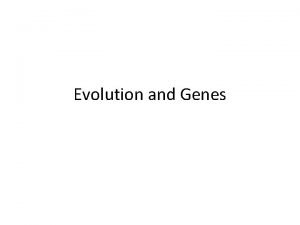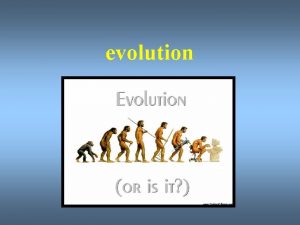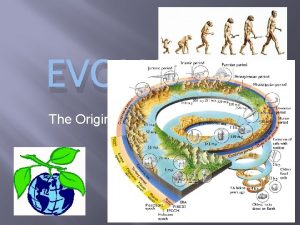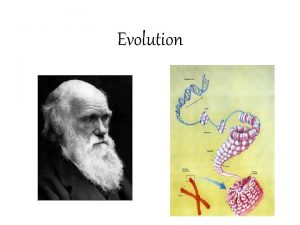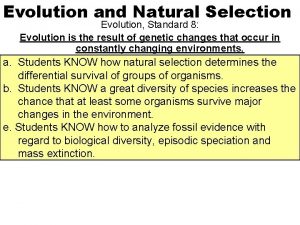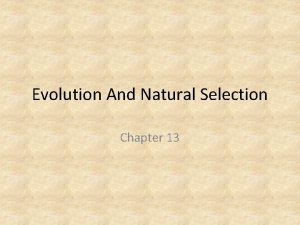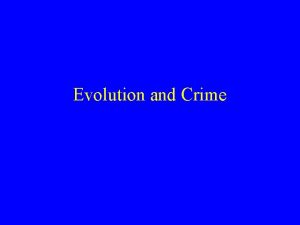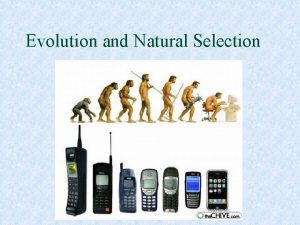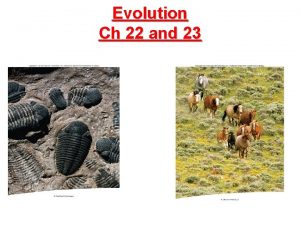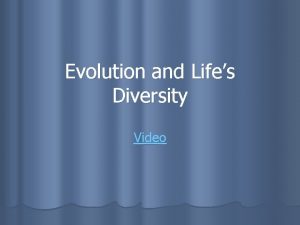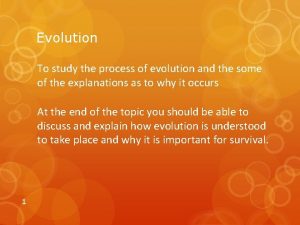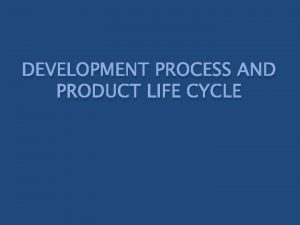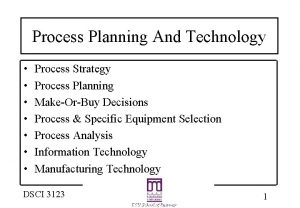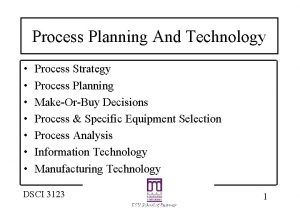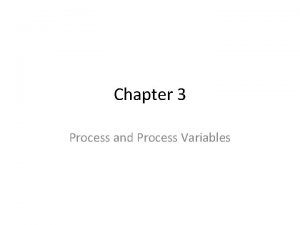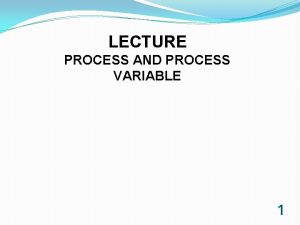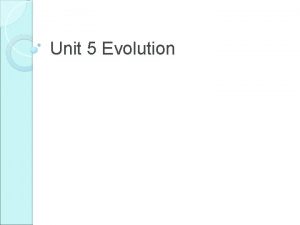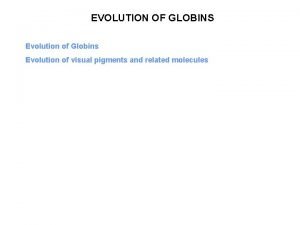Evolution Ch 15 and 14 Evolution The process















































































- Slides: 79

Evolution Ch 15 and 14

• Evolution: The process by which organism change over time. Based on science, not opinion.

• Darwin: Evolution is descent with modification • Evolution: changes through time 1. Species accumulate difference 2. Descendants differ from their ancestors 3. New species arise from existing ones

• 1. Micro-Evolution: Change over a small period of time. • Kittlewell: A scientist who proved that the species of Peppered Moths changed over a few years due to the change in tree color. •

• 2. Macro-Evolution: Change over a large period of time. • Domestic dogs evolved from wolves with the help from humans.

Early Ideas of Evolution • • Lamarck’s theory: Before Darwin. first to realize living organisms change over time. • By selective use or disuse of organs, organisms acquired or lost traits which were • passed on to their offspring.

Lamarck’s theory of how giraffes’ long necks evolved

Ideas that helped Shape Darwin • Malthusian Doctrine: 1859 (Thomas Malthus) He observed that the human birth rate was higher than the death rate. If it continued, humans would run out of room and food. (Malthusian Doctrine referred to during famine, war and mass disease) • Competition for resources will cause variations.

Ideas that helped Shape Darwin • Charles Lyell’s Book: Principle of Geology • That proposed the Earth was Millions of Years Old not a few thousand. • When he found ocean floor fossils he referred back to this book.

Charles Darwin: • Charles Darwin: (1809 - 1882) HMS Beagle. • Traveled around the world to collect specimens at the age of 23 in 1831. • Galapagos Islands: • (Finches and Tortoises) • Wrote: “The Origin of Species • by Means of Natural Selection”. • Degree in Theology from Cambridge University

11

Voyage of the Beagle 12

Charles Darwin Served as naturalist on mapping expedition around coastal South America. Used many observations to develop his ideas Proposed that evolution occurs by natural selection 13

• Published 30 years after the voyage. • It explained that evolution is a long slow process. • All organisms have a common ancestor (Common descent) • and are descendents from other species Alfred Russel Wallace proposed the identicle theory, which made Darwin publish his book.

Darwin’s Evidence Population growth vs. availability of resources - Darwin realized that not all members of a population survive and reproduce. -Darwin based these ideas on the writings of Thomas Malthus. 15

Post-Darwin Evolution Evidence Fossil record - New fossils are found all the time - Earth is older than previously believed Mechanisms of heredity - Early criticism of Darwin’s ideas were resolved by Mendel’s theories for genetic inheritance. 16

Fossils • Fossil Records: Preserved remains of old organisms. • * Petrification. minerals in soil replace calcium. • * Imprints. • * molds

• Adaptation: Having a mutation which enables an organism to survive and • reproduce better. (without adaptation, species would become extinct) • (Remember, over 99% of all species on earth have already become extinct)

• Absolute Dating: • Radio-Active Dating: (ex. Carbon 14 and Potassium 40) • Geologist. People who study rocks and land forms. (Pangea, Continental Drift, • Mid-Atlantic Ridge).

Geologic Time Scale: • (time line of the earth) Eras and periods. • Precambrian Time: 90 % of Earths history. Few fossils.

Paleozoic Era: (544 - 245 millions years ago) • Cambrian Period: Many marine life forms (hard shells). Drifted around the world in the oceans. • Ordovician Period: • Silurian Period: • Devonian Period: “Age of the fish” • Carboniferous Period: Reptile, fish and insects. • Permian Period: Reptile, fish and insects abundant.

• MASS EXTINCTION AT END OF PALEOZOIC ERA: • 95 % of all life died. 5% survived • Mesozoic Era: (Age of the Reptile) • Triassic Period: • Jurassic Period: (DINOSAURS RULED) • Cretaceous period: small mammals

• MASS EXTINCTION AT END OF MESOZOIC ERA: • Over 50% of all live died, Including most dinosaurs.

• Cenozoic Era: (65 mya - present) (Age of Mammals) • Tertiary Period • Quanternary Period

Darwin to the Galapagos Islands Darwin arrived in the Galapogos in 1835. • Darwin spotted 14 different species of finches on the Galopagose Islands. • All of these finches came from 1 single ancestral species. Each lived in a different Niche. HOW DID THIS HAPPEN?

26

Natural selection: mechanism of evolutionary change Natural selection: proposed by Darwin as the mechanism of evolution • individuals have specific inherited characteristics • they produce more surviving offspring • the population includes more individuals with these specific characteristics • the population evolves and is better adapted to its present environment

Darwin’s theory for how long necks evolved in giraffes

Natural selection • 3 conditions for natural selection to occur – Variation must exist among individuals in a population – Variation among individuals must result in differences in the number of offspring surviving – Variation must be genetically inherited


Natural Selection • Adaptation: Species pass on inherited traits that increase their ability to survive. • He had internal conflicts with what he discovered. It went against what he believed.

Evidence That Suports Darwin’s Theory: • 1. ) Geology: By studying fossils he believed the earth was much older than people of his time had thought. • He also studied and observed areas that were affected by volcanoes and earthquakes. These changed the surface of the earth.

Evidence For Evolution • He also saw that certain places contained a certain species that changed as we looked thought the fossil record.

• 2. ) Farmers / Breeders: Farmers altered and improved their own live stalk though selective breeding Techniques. (Artificial Selection) • He noticed this with Pigeons. • 3. ) Population Controls: Over time conditions prevent the endless growth o a population. • 1. Famine 2. Disease 3. War 4. Drought • These apply to plants as well as animals.

What we know and understand about Darwin’s finches. • 1. Parent birds came from the South American mainland to the island. How? • 2. The island caused a separation of the population. • 3. Once separated changes in the gene pool occur. • This depends on the niche and this may lead to phenotypic differences.

• 4. Reproductive isolation caused by gene pooling the genes change.

• 5. If the species migrated near each other 3 possible outcome could happen. • 1. coexistance if they occupy different niches. • 2. Extinction if they occupy the same niche and compete. • 3. Further Evolution if one species has many genetic variations this may be the result.


• Artificial Selection: People select the desired traits in the parents so the offspring • will possess those desired traits. (ex. farmers = corn, or cows etc) ( dog breeder • = good hunting dog, friendly, guard dog etc. )

• Natural Selection: The fittest organisms survive so the offspring will posses those fit traits. (Mother Natures way of artificial selection). • Nature produces the most fit offspring. • Ex. Dogs their are many breeds and wild dogs and street dogs have the same traits everywhere around the world. ( Short hair, curly tails, about 30 -40 pounds).

• “Survival of the fittest”: Species of Organisms compete for food and space to live. Those that can are consided more fit and win the struggle to exist. • Genetic Fitness: The fitness of an organism is based on the genetic makeup. • Gene Variation: All organisms are genetically different. (Mutations and Gene shuffling)

Gene Variation in Nature • Measuring levels of genetic variation – blood groups – enzymes • Enzyme polymorphism – A locus with more variation than can be explained by mutation is termed polymorphic. – Natural populations tend to have more polymorphic loci than can be accounted for by mutation. • DNA sequence polymorphism

Hardy-Weinberg Principle • Godfrey H. Hardy: English mathematician Wilhelm Weinberg: German physician Concluded that: The original proportions of the genotypes in a population will remain constant from generation to generation as long as five assumptions are met

Hardy-Weinberg Principle Five assumptions : 1. No mutation takes place 2. No genes are transferred to or from other sources 3. Random mating is occurring 4. The population size is very large 5. No selection occurs

Hardy-Weinberg Principle Calculate genotype frequencies with a binomial expansion (p+q)2 = p 2 + 2 pq + q 2 • p = individuals homozygous dominant for first allele • 2 pq = individuals heterozygous for both alleles • q = individuals homozygous recessive for second allele • because there are only two alleles: p plus q must always equal • www. bozemanscience. com/solving-hardyweinberg-problems


A population not in Hardy-Weinberg equilibrium indicates that one or more of the five evolutionary agents are operating in a population Five agents of evolutionary change 47

Five agents of evolutionary change 48

Five agents of evolutionary change 49

Genetic Drift • Genetic drift: Random fluctuation in allele frequencies over time by chance • important in small populations –founder effect - few individuals found new population (small allelic pool) –bottleneck effect - drastic reduction in population, and gene pool size 50

Fitness: • Physical traits and behavior that enable an organism to survive and • reproduce. Gene mutations make some organism more fit, others less fit. The more • fit will survive and reproduce. Based on Genetics. This is the bases of Evolution. • Fitness is a combination of: – Survival: how long does an organism live – Mating success: how often it mates – Number of offspring per mating that survive

Body size and egg-laying in water striders


Maintenance of Variation • Frequency-dependent selection: depends on how frequently or infrequently a phenotype occurs in a population – Negative frequency-dependent selection: rare phenotypes are favored by selection – Positive frequency-dependent selection: common phenotypes are favored; variation is eliminated from the population • Strength of selection changes through time 54

Maintenance of Variation • Oscillating selection: selection favors one phenotype at one time, and a different phenotype at another time • Galápagos Islands ground finches – Wet conditions favor big bills (abundant seeds) – Dry conditions favor small bills 55

Maintenance of Variation • Fitness of a phenotype does not depend on its frequency • Environmental changes lead to oscillation in selection 56

Maintenance of Variation • Heterozygotes may exhibit greater fitness than homozygotes • Heterozygote advantage: keep deleterious alleles in a population • Example: Sickle cell anemia • Homozygous recessive phenotype: exhibit severe anemia 57

Fitness • Fitness Topography: Two curves that fit over each other. One is the environmental • fitness level. The other is the organisms genetic fitness level. •

• Adaptation: Having a mutation which enables an organism to survive and • reproduce better. (without adaptation, species would become extinct) • (Remember, over 99% of all species on earth have already become extinct)

• Evolutionary Tree: A linear chart showing how species might be related. • http: //www. bozemanscience. com/cladograms • • Adaptive Radiation: One species evolved into many different species. • • Coevolution: Two unrelated organism evolve together and become dependent on each • other. (ex. Certain bees and flowers • http: //www. bozemanscience. com/coevolution

• Convergent Evolution: Unrelated organisms evolve similar body parts which best suits • the environment. (dolphins, fish, penguins) • http: //www. pbs. org/wgbh/nova/evolution/ev olution-action-salamanders. html

Genetics And Evolution: • Genes can cause random variations for natural selection, in the form of Mutations or changes caused by crossing over. • Remember that natural selection only works on the Phenotipic Variations.

Speciation • Development of a New Species: (Speciation) • All species eat different foods and live in different areas or the organisms will not survive. This role that an organism plays is called a Niche. • If Two organisms occupy the same niche than they must compete. and no two speicies can occupy the same niche or very long.

Speciation • A new species will form only if populations are isolated or separated. • If this does not occur than the gene pools will blend together and the species will look the same.

Isolation can happen by. . . • 1. Geographic barriers. Rivers Mountains, lakes, Oceans etc. . Ecological Isolation • 2. Courtship Behaviors or Fertile Periods: Each species has their specific behaviors for finding a mate. The individual with the best method will pass on there traits more often. • Temporal Isolation: Different Species mate at different times due to Temperature Changes.

Behavioral Isolation • 3. Obtaining Food. The individuals that obtain food the easiest will look much healthier and therefore have a better chance of mating. • Mechanical Isolation: Shape of body or body parts. • http: //www. bozemanscience. com/003 genetic-drift

• **Once Reproductive isolation happens natural selection usually increases the difference between separate populations

Evidence for Evolution • Fossils not the only evidence: • 1. Embryonic Stage: • * gill slits, notocord. etc • * Similarity in all cells(Organelles, mitosis, meiosis) • * DNA (ATCG).

Evidence for evolution • • • 2. Similar Body Structure: * Homologous Structures Bird wings, dog legs (same bones) * Vestigial organs. (don’t serve a function anymore. Tail bone, appendix, ear muscle, legs on snakes, etc)

Post-Darwin Evolution Evidence Comparative anatomy - Homologous structures have same evolutionary origin, but different structure and function. - Analogous structures have similar structure and function, but different evolutionary origin. 70

Homologous Structures 71

Post-Darwin Evolution Evidence Molecular Evidence - Our increased understanding of DNA and protein structures has led to the development of more accurate phylogenetic trees. 72

Endosymbiosis -proposal that eukaryotic organelles evolved through a symbiotic relationship -one cell engulfed a second cell and a symbiotic relationship developed -mitochondria and chloroplasts are thought to have evolved this way

Endosymbiosis Much evidence supports this endosymbiosis theory. Mitochondria and chloroplasts: -have 2 membranes -possess DNA and ribosomes -are about the size of a prokaryotic cell -divide by a process similar to bacteria


Unifying Themes in Biology Cell theory - All living organisms are made of cells, and all living cells come from preexisting cells. Molecular basis of inheritance - DNA encodes genes which control living organisms and are passed from one generation to the next. 76

Unifying Themes in Biology Structure and Function -The proper function of a molecule is dependent on its structure. -The structure of a molecule can often tell us about its function. 77

Unifying Themes in Biology Evolutionary change - Living organisms have evolved from the same origin event. The diversity of life is the result of evolutionary change. Evolutionary conservation - Critical characteristics of early organisms are preserved and passed on to future generations. 78

79
 Chapter 14 evolution a history and a process
Chapter 14 evolution a history and a process Hát kết hợp bộ gõ cơ thể
Hát kết hợp bộ gõ cơ thể Slidetodoc
Slidetodoc Bổ thể
Bổ thể Tỉ lệ cơ thể trẻ em
Tỉ lệ cơ thể trẻ em Voi kéo gỗ như thế nào
Voi kéo gỗ như thế nào Chụp phim tư thế worms-breton
Chụp phim tư thế worms-breton Hát lên người ơi alleluia
Hát lên người ơi alleluia Môn thể thao bắt đầu bằng từ chạy
Môn thể thao bắt đầu bằng từ chạy Thế nào là hệ số cao nhất
Thế nào là hệ số cao nhất Các châu lục và đại dương trên thế giới
Các châu lục và đại dương trên thế giới Công thức tính độ biến thiên đông lượng
Công thức tính độ biến thiên đông lượng Trời xanh đây là của chúng ta thể thơ
Trời xanh đây là của chúng ta thể thơ Cách giải mật thư tọa độ
Cách giải mật thư tọa độ Làm thế nào để 102-1=99
Làm thế nào để 102-1=99 độ dài liên kết
độ dài liên kết Các châu lục và đại dương trên thế giới
Các châu lục và đại dương trên thế giới Thể thơ truyền thống
Thể thơ truyền thống Quá trình desamine hóa có thể tạo ra
Quá trình desamine hóa có thể tạo ra Một số thể thơ truyền thống
Một số thể thơ truyền thống Bàn tay mà dây bẩn
Bàn tay mà dây bẩn Vẽ hình chiếu vuông góc của vật thể sau
Vẽ hình chiếu vuông góc của vật thể sau Thế nào là sự mỏi cơ
Thế nào là sự mỏi cơ đặc điểm cơ thể của người tối cổ
đặc điểm cơ thể của người tối cổ V cc
V cc Vẽ hình chiếu đứng bằng cạnh của vật thể
Vẽ hình chiếu đứng bằng cạnh của vật thể Fecboak
Fecboak Thẻ vin
Thẻ vin đại từ thay thế
đại từ thay thế điện thế nghỉ
điện thế nghỉ Tư thế ngồi viết
Tư thế ngồi viết Diễn thế sinh thái là
Diễn thế sinh thái là Dạng đột biến một nhiễm là
Dạng đột biến một nhiễm là Số nguyên tố là
Số nguyên tố là Tư thế ngồi viết
Tư thế ngồi viết Lời thề hippocrates
Lời thề hippocrates Thiếu nhi thế giới liên hoan
Thiếu nhi thế giới liên hoan ưu thế lai là gì
ưu thế lai là gì Hổ sinh sản vào mùa nào
Hổ sinh sản vào mùa nào Khi nào hổ con có thể sống độc lập
Khi nào hổ con có thể sống độc lập Sơ đồ cơ thể người
Sơ đồ cơ thể người Từ ngữ thể hiện lòng nhân hậu
Từ ngữ thể hiện lòng nhân hậu Thế nào là mạng điện lắp đặt kiểu nổi
Thế nào là mạng điện lắp đặt kiểu nổi What process is the driving force behind evolution
What process is the driving force behind evolution Coronoid process and coracoid process
Coronoid process and coracoid process Coronoid and condylar process
Coronoid and condylar process Substantive vs procedural due process
Substantive vs procedural due process Business process levels
Business process levels Ergodicity
Ergodicity What is process to process delivery
What is process to process delivery Stable quality
Stable quality Process-to-process delivery
Process-to-process delivery Process street vs sweet process
Process street vs sweet process Sweet evaluation
Sweet evaluation Computer architecture: concepts and evolution
Computer architecture: concepts and evolution Evolution of populations section 16-1 genes and variation
Evolution of populations section 16-1 genes and variation Genetics
Genetics History and evolution of repertory
History and evolution of repertory Graph evolution: densification and shrinking diameters
Graph evolution: densification and shrinking diameters Facility management history and evolution
Facility management history and evolution Darwin and evolution
Darwin and evolution Comparative embryology definition
Comparative embryology definition Chapter 5 evolution and community ecology answer key
Chapter 5 evolution and community ecology answer key Chapter 21 section 1 plant evolution and adaptations
Chapter 21 section 1 plant evolution and adaptations Computer evolution and performance
Computer evolution and performance Chapter 18 genomes and their evolution
Chapter 18 genomes and their evolution Evolution of populations section 16-1 genes and variation
Evolution of populations section 16-1 genes and variation During medieval time, garde manger refers to
During medieval time, garde manger refers to Kishore card repertory
Kishore card repertory Origin and evolution of amphibia
Origin and evolution of amphibia First repertory was published by
First repertory was published by Homeostasis and evolution
Homeostasis and evolution Gis evolution and future trends
Gis evolution and future trends Origin and evolution of amphibia
Origin and evolution of amphibia Origin and evolution of amphibia
Origin and evolution of amphibia Origin and evolution of amphibia
Origin and evolution of amphibia Leisure
Leisure Industry evolution and strategic change
Industry evolution and strategic change Chapter 5 evolution and community ecology
Chapter 5 evolution and community ecology Chapter 5 evolution and community ecology answer key
Chapter 5 evolution and community ecology answer key
